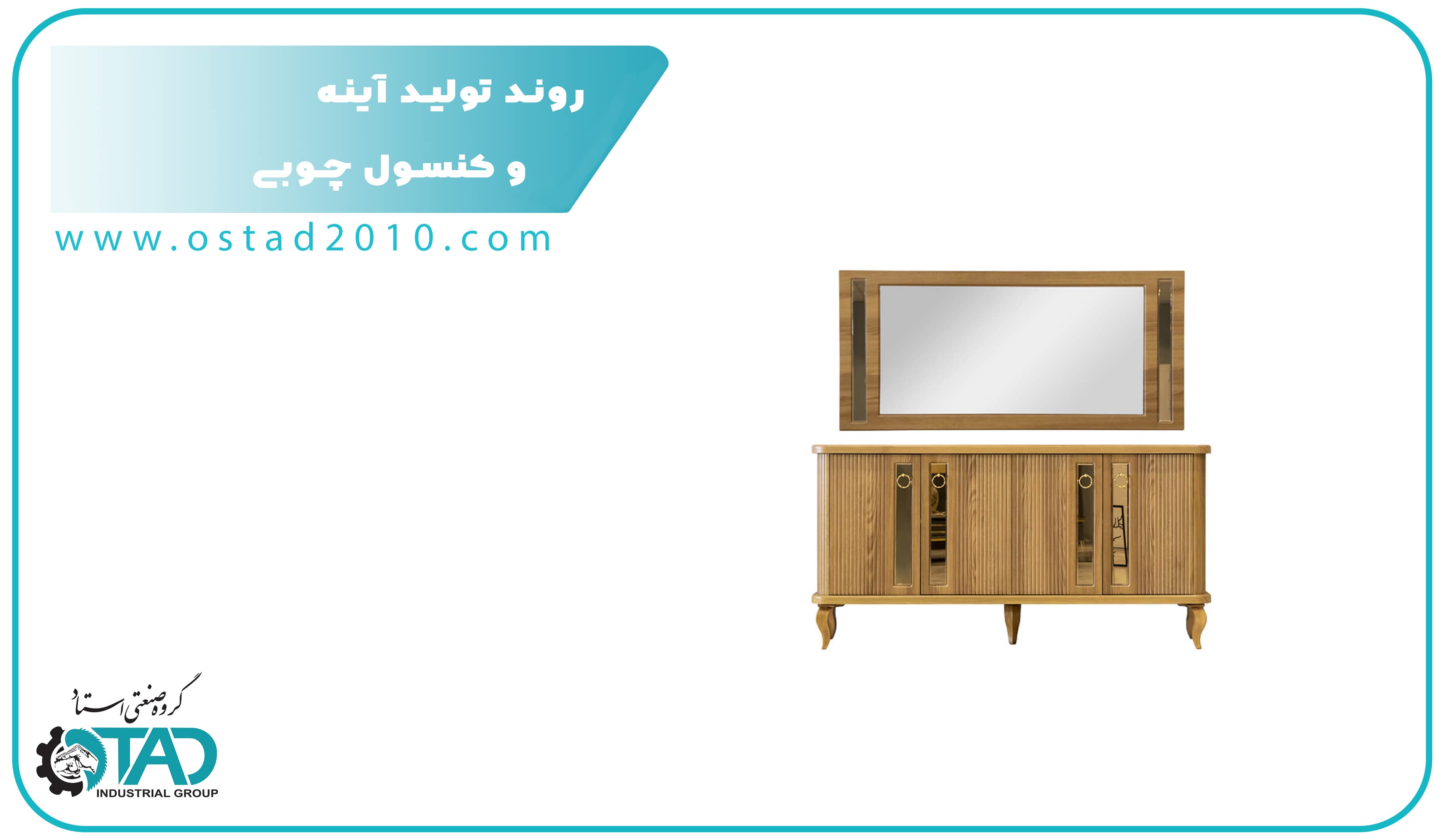
In this article, we explore the different stages of manufacturing wooden mirrors and consoles. We begin with selecting suitable raw materials and wood, then detail each production phase—from cutting and shaping the wood to final steps like mirror installation and applying paint and lacquer. We also discuss how modern technology and machinery enhance product quality and accelerate production.
The aim of this article is to provide a comprehensive overview of the wooden mirror and console manufacturing process, highlighting the artistry and precision involved at every step. Join us for a closer look at this age-old craft, rich in detail.
Manufacturing a wooden mirror or console is a precise, multi-step process—from selecting raw materials to final assembly and finishing. Below are the main stages:
The first and one of the most critical steps is choosing the right wood. Species like oak, walnut, and beech are selected based on their physical properties and natural beauty. Each board is carefully examined for quality and purity.
Designers create initial sketches. Once approved, the wood is cut into required shapes and dimensions using precise, modern saws to minimize errors.
Cut pieces are refined using CNC machines or manual carving tools to shape them into intricate patterns. This stage demands high skill and attention to detail.
The shaped pieces are joined to form the mirror frame or console structure. Joints may be bonded with wood glue, screws, dowels, or traditional woodworking techniques.
After assembly, all surfaces are sanded smooth to prepare the wood for finishing, ensuring even application of coatings down the line.
Wood surfaces are painted or stained, then coated with one or more layers of clear lacquer to enhance both durability and aesthetics.
If the product includes a mirror, it is carefully fitted into the frame and secured with special adhesives or hidden fasteners.
Each finished piece is inspected for defects, corrected if necessary, then delicately packaged and prepared for shipping to customers.
Every stage—from raw material selection to final packaging—directly affects the product’s quality and visual appeal. Using modern technology alongside traditional workmanship allows manufacturers to deliver high-quality wooden mirrors and consoles in diverse, elegant designs.
The production of wooden mirrors and consoles is a seamless blend of art, craftsmanship, and technology. From choosing premium wood to meticulous carving, painting, and finishing, each step requires attention to detail and refined skill. This process creates beautiful, functional pieces that bring natural warmth and charm into our homes.
Focusing on material quality and production methods ensures the durability and sturdiness of the final products. Combining modern machinery with traditional techniques gives manufacturers the flexibility to meet diverse customer preferences with confidence.
In the end, crafting a wooden mirror or console is more than just industrial production—it’s a form of artistry that enhances living spaces with handcrafted elegance and resilience. We hope this article has offered you a comprehensive insight into the process and revealed the true value behind every wooden piece.
Web Design By Mr.Coder